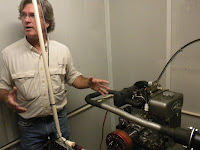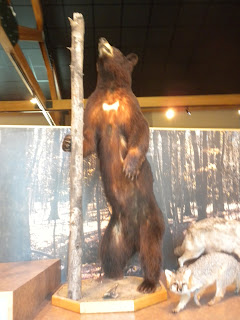
It was the last field trip of Agricultural
Communication class. So, we all decided to go and visit Nine Oaks Farm at Brookland, Arkansas. It is a farm company which manufactures Beef products. Honestly telling, I never eat beef, but I was
Farm at Brookland, Arkansas. It is a farm company which manufactures Beef products. Honestly telling, I never eat beef, but I was deeply interested what is different between the beef products that are found at Oka farm and other ordinary markets. In our culture we worship Cow as a symbol of mother. And we always respect the cow in Hindu religion. Despite that I went to know why people use the beef as their main products. Why not other cattle such as lamb, goat, chicken, or deer.
deeply interested what is different between the beef products that are found at Oka farm and other ordinary markets. In our culture we worship Cow as a symbol of mother. And we always respect the cow in Hindu religion. Despite that I went to know why people use the beef as their main products. Why not other cattle such as lamb, goat, chicken, or deer.
When I see others farm land around Nebraska and Texas, I usually see thousands of cows in a small farm land. But when I saw the farm land of Nine Oak, I was surprised.
Then I asked the farm person, why they have only few cattle’s. In answers he replies that “this is the difference between other farms and Nine Oak”. “We only breed few selected cattle’s and take care of their health and everything

they are feed” he added, “we never feed any kinds of chemicals rather we feed the cows green grass and cotton seed which has high protein.
They usually check every cattle’s in regular basis. In a farm land they never put the cattle more than a dozen. They believes that doing so, cows can easily use the green grass and they can move freely where they could be more active and the taste of meat is different.
Since 1960s’ nine oaks are serving the beef products, despites during the established period they used to sell dairy products. They only sell their meat products to certain restaurant and certain market. And they sell some of their products to different costumers
 and they deliver to home. If you could not find their beef product then you may visit to Farmers market at Arkansas State University.
and they deliver to home. If you could not find their beef product then you may visit to Farmers market at Arkansas State University.































